Seminal Indian Political Artist Chittaprosad Gets a Long-Overdue New York Show
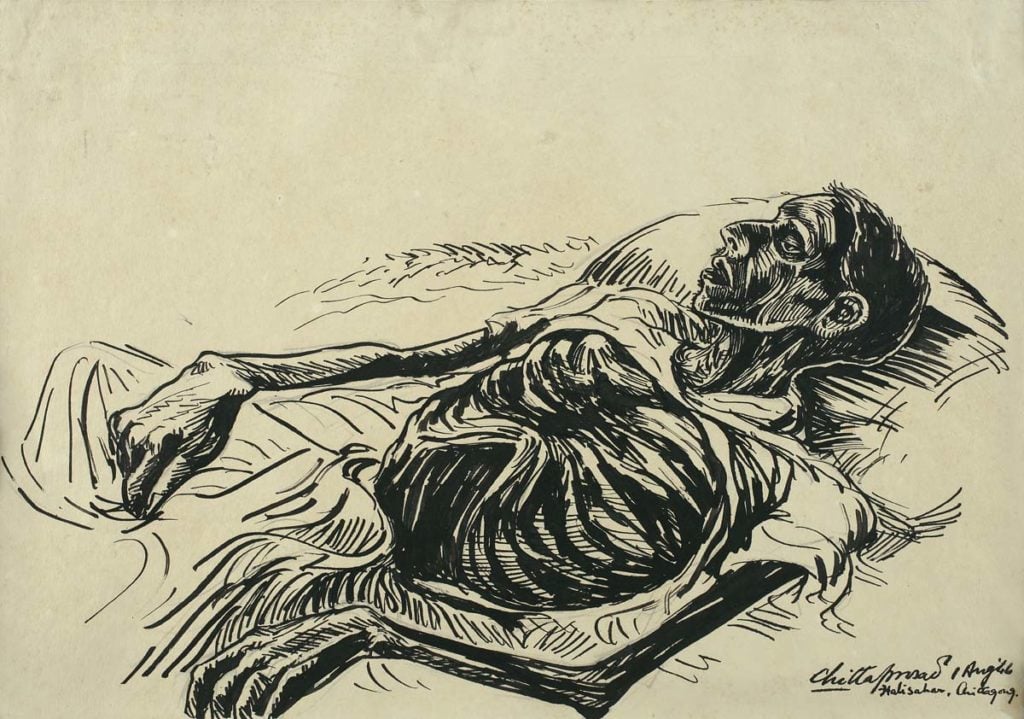

Artnet Gallery Network

Chittaprosad Bhattacharya is recognized as being one of the most important Indian artists of his generation. Documenting the effects of Colonialism and the anguish of the 1943 Bengal famine, he helped draw international attention to the country’s battle for independence from the British. However, in the world of art, his work never received much institutional or critical recognition outside of his home country.
Now, four decades after his death in 1978, that’s starting to change. Chittaprosad’s work is garnering attention on the international stage, most notably last year when his sketches were included in documenta 14 in Kassel.
This week, the newfound appreciation for the seminal artist moves on to the United States. On Thursday, March 15, “Chittaprosad: A Retrospective” opens at DAG’s New York outpost. The exhibition is the artist’s first large-scale survey outside of India.
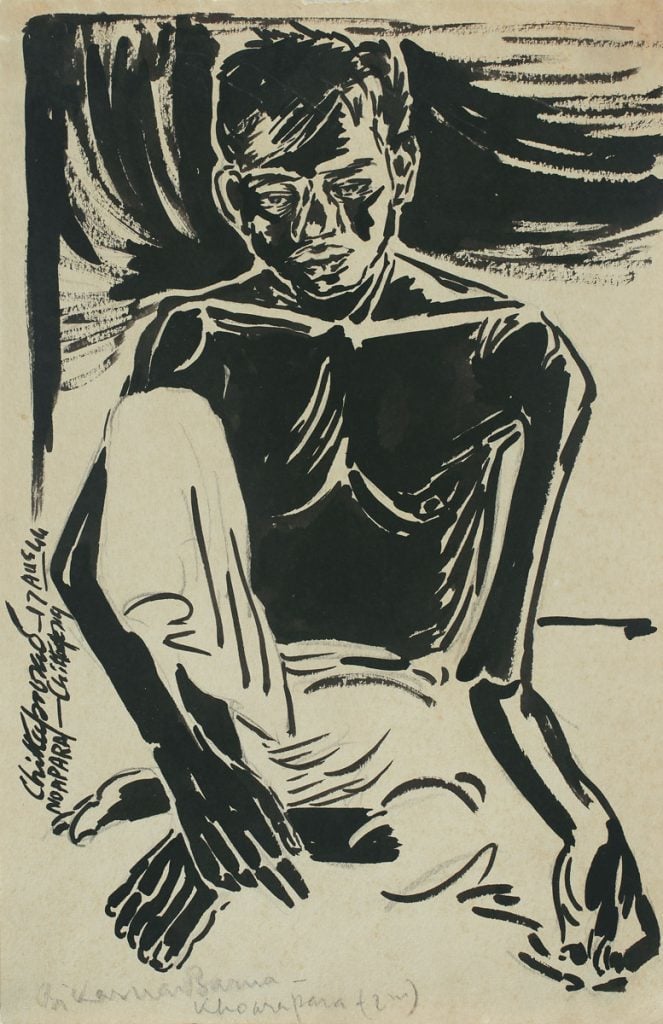
Chittaprosad Bhattacharya, Noapara, Chittagong (1944). Courtesy of DAG.
Chittaprosad was a self-taught artist who worked with ink drawing and printmaking. He was denied entry into two of the country’s most prominent art schools, Kala Bhavana and the Government College of Art & Craft, but was encouraged to pursue his work by mentors he met in the Freedom Movement—notably Puran Chand Joshi, a prominent member of Communist Party of India. He was a staunch activist, an important voice in the fight against colonialism, and believed that art-making is inherently a political act.
“In my artwork, I represent the tradition of moralists and political reformers,” Chittaprosad wrote in Confession, a short documentary about the artist’s life made by Czech filmmaker Pavel Hobl (also included in the DAG exhibition). “To save people means to save art itself. The activity of an artist means the active denial of death.”
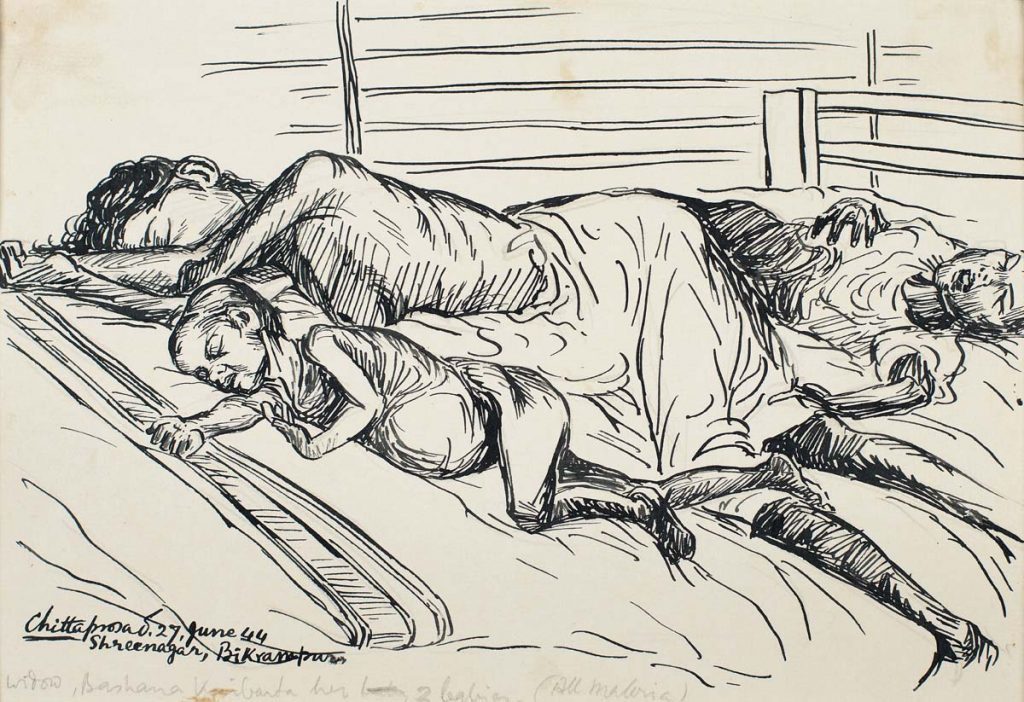
Chittaprosad Bhattacharya, Bashana Kaibarta , E. R. Hospital (1944). Courtesy of DAG.
Chittaprosad is best known for sketches depicting the suffering of the Bengal famine when more than two million people in British India died from starvation and disease while the British government chose to devote its resources to the war. However, DAG’s survey brings together much more than just the artist’s famine sketches. It also includes Chittaprosad’s linocuts, photographs, watercolors, and published writing in leftist political journals, as well as the work he did after India declared independence, when he left the communist party and refocused his efforts on education, operating a puppet theater for children in poor areas of Mumbai.
“Chittoprassad’s resistance and values feel very salient now,” says DAG’s CEO Ashish Anand. “He represents political art as a tool that holds up a mirror to society.”
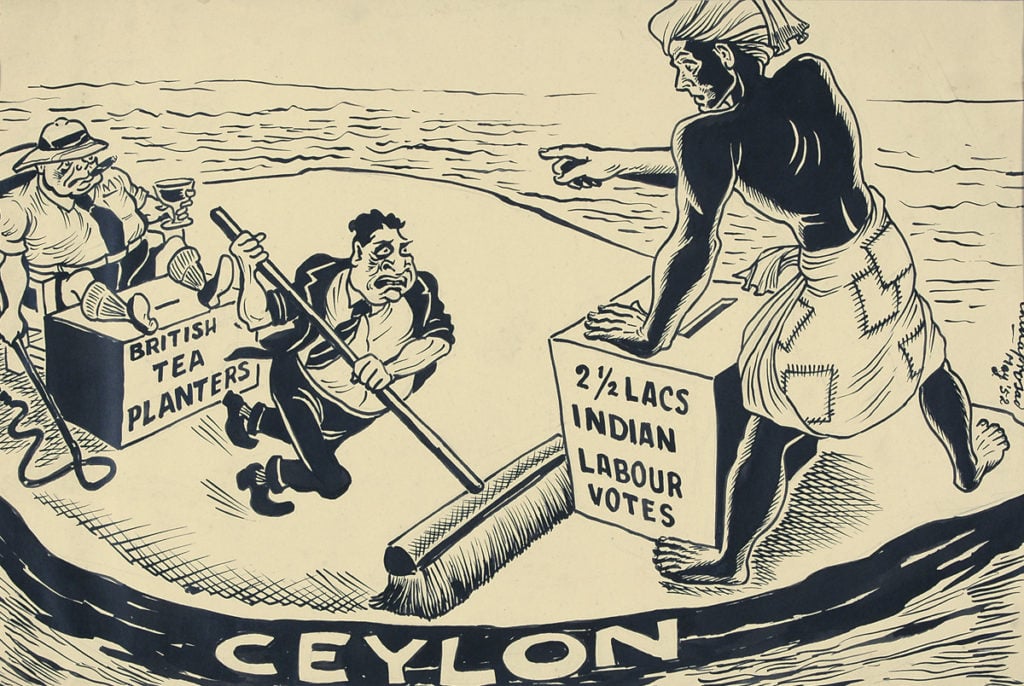
Chittaprosad Bhattacharya, Untitled (1952). Courtesy of DAG.
The exhibition was designed by French museographer Adrien Gardère, and is accompanied by a five-volume catalog on Chittaprosad’s life, art, and personal writings, organized by art-historian Sanjoy Kumar Mallik. The fifth book in the set is a reproduction of the only existent copy of “Hungry Bengal,” Chittaprosad’s illustrated report on the famine. The British government seized and destroyed “Hungry Bengal” upon its publication in 1943.
This Saturday, March 17th, in celebration of New York’s Asia Art Week, the gallery will also host a conference dedicated to Chittaprosad’s work.
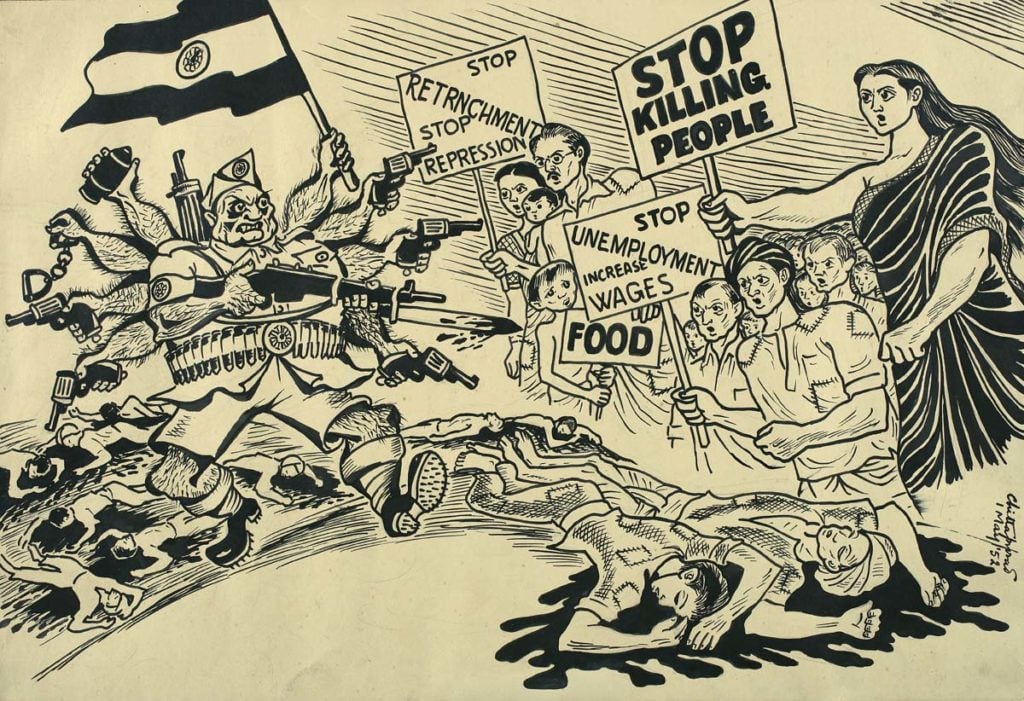
Chittaprosad Bhattacharya, Untitled (1952). Courtesy of DAG.
“Chittaprosad: A Retrospective” opens Thursday, March 15 at DAG, and will be on view through June 15, 2018.